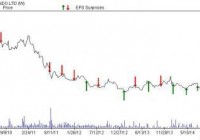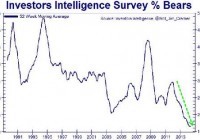Zacks’ Bear Of The Day: EQT Corporation
Many investors have been focused in on the oil crash of 2014 as prices for the important commodity have basically been halved in the year. Yet many investors might not realize that even with a chilly start to 2015 across much of the nation, natural gas prices remain subdued as well. In fact, natural gas prices trading on the NYMEX have crashed in just the past two months with prices tumbling from $4.60 to their current level right around the $3.00 mark. This represents a dramatic 35% loss in basically just the past six weeks, and even winter seems to be doing very little to boost prices in the near term and save this commodity from further losses. As you might expect given these terrible trends, natural gas-focused stocks have also been having a very rough time, much like their oil-driven peers. A great example of this trend, and a company that you should probably continue to avoid in 2015, comes to us from Pennsylvania with EQT Corporation (NYSE: EQT ) . EQT in Focus This Pittsburgh-based company focuses on exploring for and producing various hydrocarbon resources in the Appalachian Basin. The company also has a midstream division as well, which helps to get natural gas and other energy resources out of the fields and further downstream to refiners and other processors. This business has actually been a pretty solid one to be in over the past half decade as EQT was actually putting up a very nice performance. The stock was actually beating out the S&P 500 on a five year look until this past December when the energy crash finally caught up to EQT and pushed the stock down roughly 25% over the past six months of 2014. Some might think that the worst is over for this company, and especially so if energy prices can find a new equilibrium in the near term. But if you look to recent analyst estimate revisions for EQT’s earnings, you’ll see that more trouble may be ahead for this stock and that you should probably hold-off on trying to catch this falling knife to start 2015. Recent Estimate Revisions Not a single analyst has stepped up to the plate and raised their earnings estimates for EQT in the past sixty days. Instead, all of the new estimates have been lower for EQT, including five lower for the current year in the past two months. This has had a dramatic impact on the full year consensus estimate for EQT as this has plunged from $3.50/share 90 days ago to just $3.13/share today. We have seen a similar trend for the next year time frame, as estimates here have fallen by 20% in the period, suggesting that analysts do not see a turnaround coming in the near future. For these reasons, we have assigned EQT a Zacks Rank #5 (Strong Sell) and are looking for more underperformance from this company to start 2015, and especially so if energy prices remain subdued. Other Picks? The oil exploration and production industry is having a very difficult time right now thanks to the macro environment. This leaves the industry with a rank that is in the bottom 10% overall, suggesting that there are far better choices out there for investors. However, if you are dead set on the oil E&P space, you might want to consider LRR Energy (NYSE: LRE ) instead. This company currently has a Zacks Rank #2 (Buy), while it just saw a great earnings beat and a huge surge in analyst estimates for the company’s upcoming earnings. This may make LRE a better choice in the space for investors right now, or at least an arguably more favorable pick than EQT for the time being.

